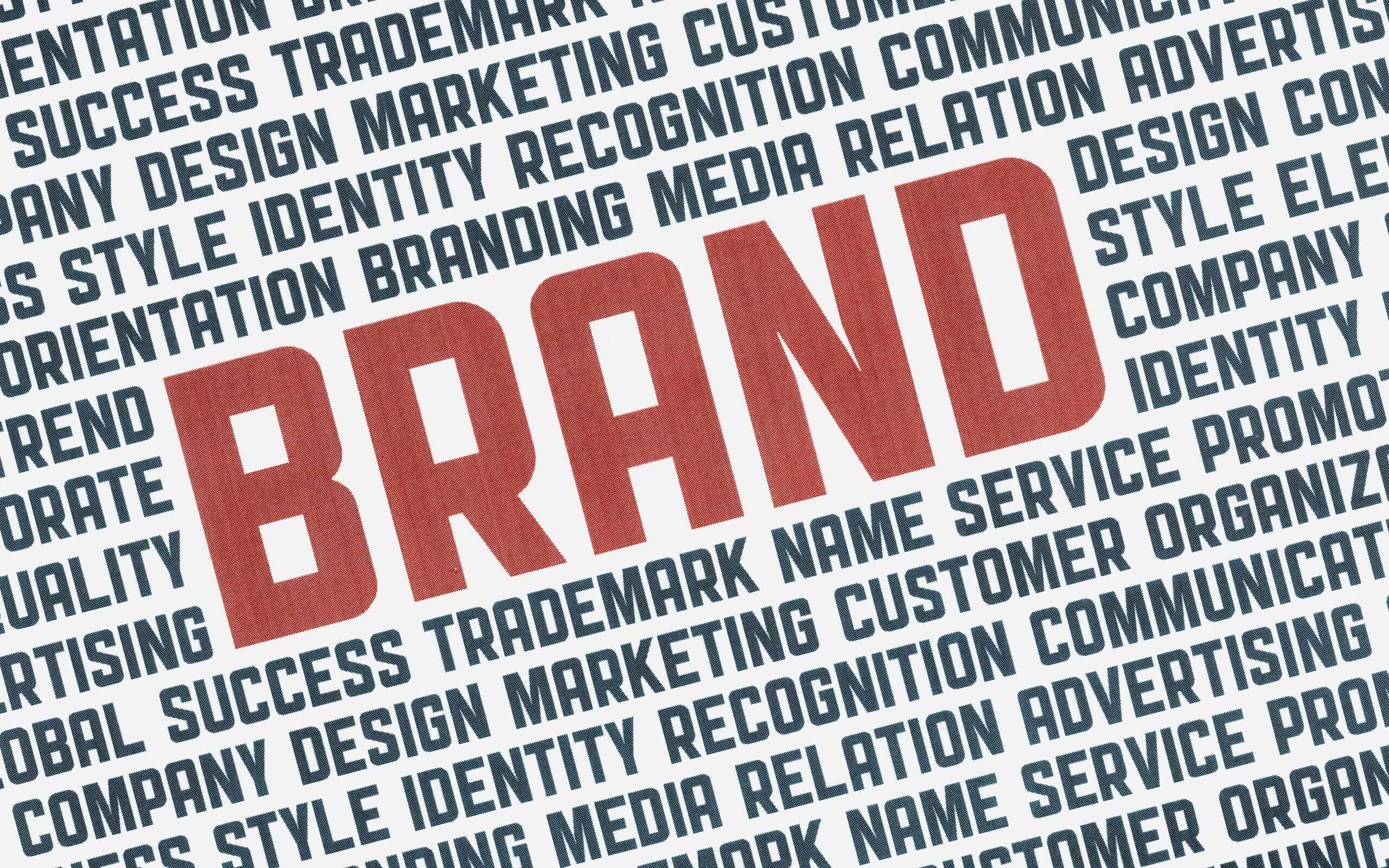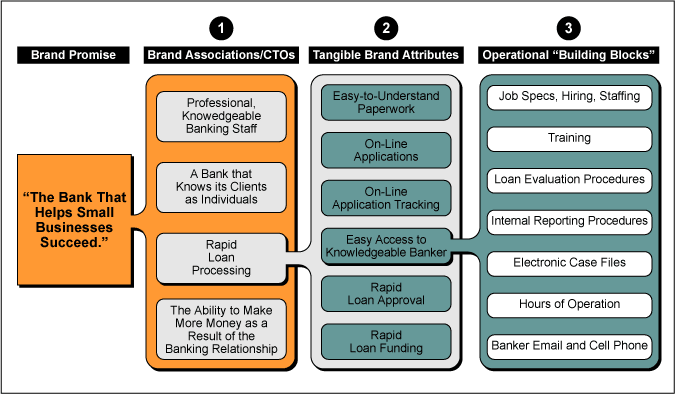
“99.44 percent pure”
“It takes a licking and keeps on ticking”
“When it absolutely, positively has to be there overnight”
“The ultimate driving machine”
“We bring good things to life”
For recent generations of Americans, the slogans above have become synonymous with the high-profile brands they represent. But these words are not simply clever taglines. They are in fact shorthand descriptions of each company’s competitive strategy. These words describe what the companies are pledging to deliver as well as what is special about their products and services. In the cases of Federal Express, BMW and General Electric, consumers and stockholders would agree that the success of these brands is a function of both the relevance of their promises and how effectively and consistently the companies are able to keep them.
But what does making good on a brand promise get a company? First of all, it means the company is able to consistently deliver the products, services and experiences it promises to deliver. When this happens – and customers know about it – the customers benefit from easier shopping, reduced risk, greater perceived value and increased satisfaction. Resulting business benefits include lower marketing costs, greater pricing independence and higher net income.
Brand Promises Are Not Just Talk
Coca Cola, for example, can today sell a six-pack of its Coca Cola Classic for $5.00. Down the grocery aisle, a store brand virtually identical in its ingredients fetches a mere $2 for a six-pack. Coca Cola’s “brand tax” –which most consumers do not object to paying – has vaulted “the real thing” to No. 1 in Interbrand’s annual brand rankings, with its brand valued at more than $67 billion, according to BusinessWeek. Now that’s a powerful – and valuable – brand promise.
The top organizations in Interbrand’s 2005 rankings include not only Coca-Cola, Microsoft ($60 billion), and GE ($47 billion), but also Disney ($26 billion), McDonald’s ($26 billion) and Ford ($13 billion), companies currently struggling but continuing to be competitive in large part due to their powerful brands. Data from Interbrand and BusinessWeek illustrate the increased financial value of a powerful brand(Figure 1). As the experiences of these companies demonstrate, success is clearly related to keeping promises made to consumers, because an unkept brand promise means a failure to deliver the product, quality, service, experience or pricing customers expect. Consider “Born to perform,” “The document company” and “Reach out and touch someone.” The fact is that Jaguar’s U.S. sales in 2002 were 61,204 units and 45,875 units in 2004. Xerox was ranked 26th among the Fortune 500 in 1994 and 130th in 2004. And AT&T’s revenue/income in 2000 was $46.8 billion/$12.8 billion and $30.5 billion/-$10 billion in 2004. These companies’ sales and financial results tell the story.

Source: Stephen Root in “Branding for Banks,” UBS News for Banks, Vol. 4 (2003)
The reality is that building a strong brand means delivering maximum value to customers as consistently as possible. And that means every employee delivering on the brand promise, in every action affecting suppliers, coworkers and customers, every time. While most brand strategists might not immediately consider it, putting Six Sigma to work is one way to achieve this level of adherence to a brand promise.
Strategy, Marketing Communication and Operations
An effective brand promise rests on three legs – business strategy, communication of the promise and implementation (Figure 2). It is the third area – implementation – where plans often go astray. It is no coincidence that in organizations building vibrant, high-value brands, the constituencies responsible for the three legs – executive, marketing and operations teams – work in lockstep. The puzzle, for some, is how to get there.

Six Sigma – too often viewed as being only about wringing variation and cost from business processes – is, in fact, a versatile, effective framework for connecting executive goals (business strategy), marketing communication (brand promise) and management (operational activities).
Consider the case of the business bank that wanted to increase its share in a regional market. The bank used the DMADV roadmap of Design for Six Sigma (DFSS) and adapted it for brand strategy (Table 1). By applying DMADV, the organization realized that to advance from the business strategy to marketplace results, it was necessary to first understand the brand, define the brand promise and identify specific actions required to deliver on it (Define, Measure, Analyze). Finally, the organization needed to make sure that the defined brand promise actually was fulfilled (Design, Verify).
| Table 1: Adapting Design for Six Sigma’s DMADV for Brand Strategy | |
|
Design for Six Sigma |
Brand Six Sigma |
| Define the project goals and customer (internal and external) deliverables. | Ensure that operational activity is delivering on the competitive advantage and customer expectations created by the brand promise. |
| Measure and determine customer needs and specifications. | Determine the measurable extent and scope of competitive advantage and customer expectations created by the brand promise. |
| Analyze the process options to meet the customer needs. | Work back from the brand promise through brand associations and tangible brand attributes/CTQs to ensure that operational building blocks – business goals, organization, processes, administration and metrics – are producing the competitive advantage and delivering on customer expectations generated by the brand promise. |
| Design detailed processes to meet customer needs. | Design and implement the operational building blocks. |
| Verify the design performance and ability to meet customer needs. | Use measurement to verify that the operational building blocks are producing the tangible brand attributes/CTQs contributing to the brand associations and brand promise. |
The bank’s marketing team identified customer segments and their respective product and service needs, preferences and priorities; researched competitive threats and opportunities; and gathered complete information about the business itself – its economic model, strengths, weaknesses and internal capabilities. On the basis of that work, the organization was ready to commit to a clear brand promise: “The bank that helps small businesses succeed” (Figure 3).

This is the point at which the brand and business strategies of many organizations’ falter. The advertising and point-of-purchase campaigns take wing, but nothing else changes. Customer expectations are raised and then dashed, with predictable results. To avoid this outcome, the business bank employed DFSS techniques to transform the brand promise into “brand associations,” “tangible brand attributes” and “operational building blocks,” ultimately defining very specifically how the organization was to deliver on the promise. And because executive, marketing and operations stakeholders participated together in the process, strategic goals, expectations and planning were understood and aligned effectively throughout the organization.
A Real-World Promise and Its Parts
As this bank example illustrates, defining the brand promise in operational terms involves three critical steps (Figure 4):
1. Translating the brand promise into specific brand associations or CTQs: Here, marketers, operations management and Six Sigma practitioners study the brand promise to identify the characteristics that typical customers will associate with it. These hypotheses are then tested in customer research. For the bank, the list of brand associations included:
- Professional, knowledgeable banking staff
- A bank that knows its clients as individuals
- Rapid loan processing
- The customer’s ability to make more money as a result of the banking relationship
- And others…

2. Converting each of these brand associations into tangible brand attributes:For this bank, it was decided that “rapid loan processing” would require:
- Easy-to-understand paperwork
- Online application capability
- Online tracking of application progress
- Easy access to a banker who knows the client and the loan application
- Rapid loan approval
- Rapid provision of loan funds
3. Defining how each tangible brand attribute will be delivered operationally: Implementation of the attributes depends on some combination of human resources, processes and technology. For example, for just one attribute of rapid loan processing – easy access to a banker who knows the client and the loan application – there were implications for:
- Job specifications, hiring and staffing
- Training
- Loan evaluation and internal communication and reporting procedures
- Electronic case files
- Hours of operation
- Availability of banker email and cell phones
A Cautionary Tale
When laid out in the example of this regional business bank, the connections between strategy and operational building blocks seem almost too obvious. But history offers many examples of organizations that somehow lost the connection between their brand promises and the brand associations, attributes and building blocks needed to deliver them.
Here is just one: Between 1974 and 1986, Schlitz (“The beer that made Milwaukee famous”) lost 93 percent of its brand equity chiefly because of its decision to lower production costs. A premium brand – in fact, the No. 2 brand in its category at the time – Schlitz cut its costs in 1974 by changing ingredients and by reducing fermentation time from 12 days to four. While the cost reduction enabled Schlitz to build sales with aggressive discounts and promotions (precisely what Ford and GM are doing today), consumers noticed a difference in flavor that, coupled with the word-of-mouth story that the company was making “green beer” (improperly aged), motivated them to switch to other premium brands.
As a result, Schlitz went from selling 17.8 million barrels of beer to selling less than 1 million barrels per year. The problem, of course, was that Schlitz failed to maintain key brand associations – including taste and a reputation for quality brewing – critical to drinkers of Schlitz beer.
Conclusion: Six Sigma Provides a Roadmap
Knowing what is important to customers, knowing precisely how the organization will deliver on those attributes, and then actually delivering are all vital to profitability and growth. Organizations wanting to achieve results like leaders in the Interbrand study – rather than repeat the mistakes of Schlitz, Jaguar, AT&T and others – can look to Six Sigma for a workable roadmap. With it, they can produce exceptional business results while distinguishing themselves as true market leaders.